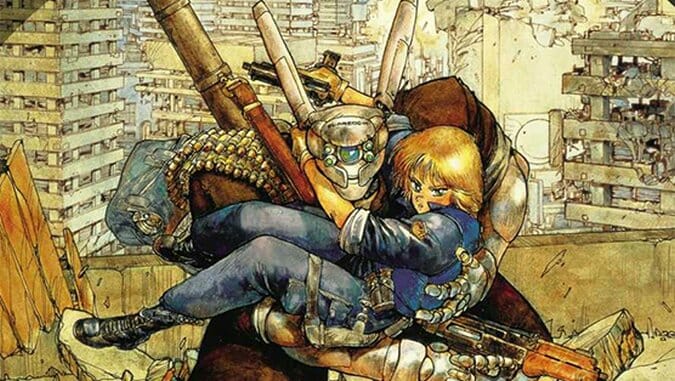10 Essential Manga That Should Belong in Every Comic Collection

While many will hear the word “comics” and think of superheroes and the litany of successful films or shows inspired by funny books, one critical and often overlooked aspect of the field is those whimsical drawings and impromptu sketches known as manga. Manga, or Japanese comic books, is one of the most popular and important mediums of storytelling today, with a thriving industry overseas that continues to grow and adapt and evolve. Yet, despite its popularity and success outside of the US, manga tends to hold a certain stigma with American audiences. For whatever reason, many comic fans find the superficial and aesthetic differences too steep to embrace, with the form’s adoption into mainstream and indie publishers a slow and gradual process.
While no inherent reason exists to drawn a line between Japanese manga and American comics, there are quite a few manga books that manage to surpass the divide with ease, as both highly influential and wildly entertaining works of art. That’s why today, Paste offers up some of the most accessible and necessary manga for any collection. Whether your interest lies in science fiction, comedy, horror, fantasy or beyond, the following books help to remove the cognitive dissonance many comic fans have placed between themselves and manga—and what you’ll find is that the sooner these books enter into your own personal collection, the greater your appreciation for the medium in its entirety will grow. Check back shortly for a list detailing our favorite American manga and manga-inspired works. ![]()

20th Century Boys by Naoki Urasawa
Where the other manga on this last stand as essential reads for their continued importance and lasting impact, 20th Century Boys is essential in a different way, specifically in regards to its sheer size and scope. Told across three generations and featuring so many storytelling devices that we often take for granted today, Naoki Urasawa’s 20th Century Boys belies inspired genius. The series follows a group of young children who predict a plan for how the world will be destroyed, only to see that plan come to fruition when they become adults. Urasawa proves himself as a master craftsman by featuring one of the most expansive and diverse casts in any manga, yet the auteur makes each individual independently recognizable as characters grow over decades. In the background, an intense mystery remains completely unsolved until the very last page of the book. Urasawa provides a masterclass in plot and weaving his characters in and out of it. Blending the various elements of the previously noted books, 20th Century Boys becomes an experience featuring horror, science fiction, post-apocalyptic futures, wild humor, epic landscapes and more as an apex accomplishment in manga.![]()
Telling the manga-curious to read Akira is like introducing toddlers to ice cream. It’s the obvious—and commonly first—choice, but it’s a standard for a reason. Akira’s relevance as a classic cannot be understated for those who haven’t read it; the book is a site to behold, featuring beautiful artwork by writer/artist Katsuhiro Otomo in one of the most imaginative and high-concept sci-fi books in existence. This is a story of youthful abandon and rebuilding life after loss, drawn over one of the most influential post-apocalyptic landscapes to date. In its collage of warring biker gangs, drugs and science-gone-awry, Akira inspires and continues to inspire the more it’s read and re-read, with neither its relevance nor its timeliness lost 30 years on.![]()
Science fiction is a frequented genre for a lot of manga, and one recurring element in that pocket is mechs, often festooned with a cyberpunk aesthetic. Shirow Masamune’s Appleseed continues to be one of the most prominent, influential examples of this electric trend. Taking place in a post-World War III landscape, humans are infused with cybernetic implants as we follow two former SWAT team members in their continued efforts to bring law and order to a broken world. With Appleseed, Shirow is one of the masters of blending unprecedented concepts with gritty realism, and the world he designed is extraordinary. And while his work on the project would go on to inform future endeavors, including (the arguably more successful/renowned) Ghost in the Shell, the legacy of Appleseed remains strong to this day, both in the worlds it inspired (like that of Neill Blomkamp’s CHAPPiE or Jim Gordon’s new Batsuit ) and the renowned artists touched by Masamune’s influence (Brandon Graham and Adam Warren, to name two).![]()
Many refer to Osamu Tezuka as the “father of manga,” and chief amongst his body of work is Astro Boy. A 21st century Pinocchio, the tale of Astro Boy is one readily familiar to many, both for its consistent revivals in films, comics and cartoons, but also its widespread influence and pop culture icon status. Astro Boy had such a profound effect of inspiration that Tezuka’s storytelling, character work and visual style went on to inspire generations of future mangaka, or comic creator. And while Tezuka has a storied body of work, the iconic status of Astro Boy makes it an absolutely essential read as its lifeblood pumps in the veins of all manga today.![]()

Dragonball/Dragonball Z by Akira Toriyama
-

-

-

-

-

-

-

-

-

-

-

-

-

-

-

-

-

-

-

-

-

-

-

-

-

-

-

-

-

-

-

-

-

-

-

-

-

-

-

-
















































